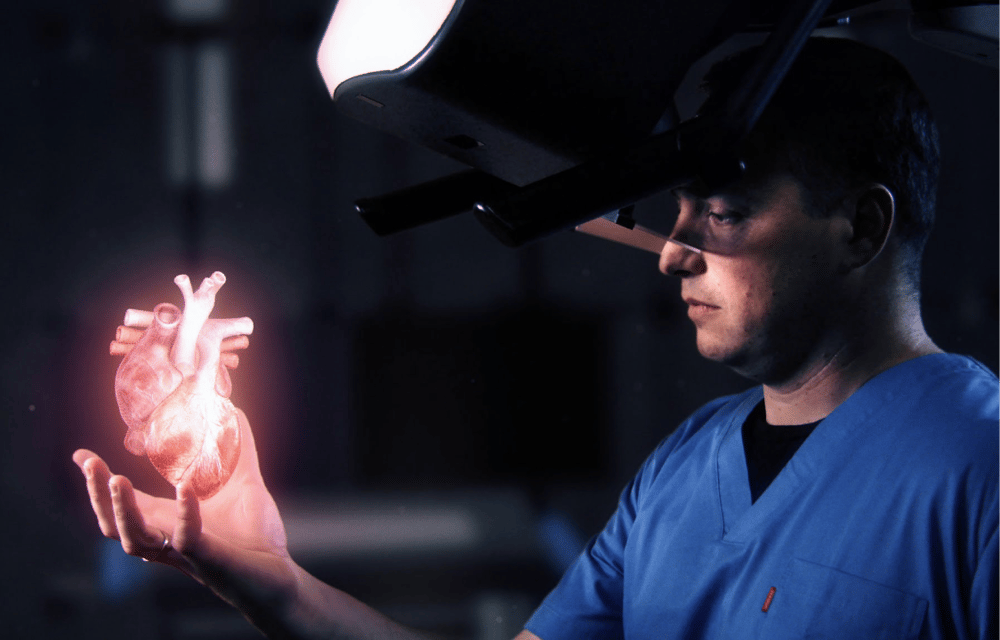Holographic imaging is revolutionizing diagnostics by allowing doctors to view detailed, 3D representations of internal organs—without making a single incision. This non-invasive, high-resolution technology enhances precision, reduces risks, and paves the way for faster, safer medical assessments.
Holographic Imaging for Diagnosing Without Cutting Open: The Future of Non-Invasive Medicine
Written by Kashish Rajput

As medicine moves increasingly into the realm of cutting-edge technology, one innovation shines ahead with almost otherworldly promise: holographic imaging. Imagine a doctor scanning your beating heart in 3D without ever having to lay a hand on a scalpel.
That is the promise this advanced technology has—the ability to diagnose and plan operations without having to cut the body open. In an age so obsessed with speed, precision, and reduced downtime, holographic imaging may be the next giant step in non-surgical medical diagnostics.
What is Healthcare Holographic Imaging?
Holographic imaging employs light technology and machine learning-based data processing to generate interactive, real-time 3D images of bones, organs, and tissue. They are derived from data captured through CT scans, MRI, or ultrasound—and converted into 360° holograms on mixed reality platforms such as Microsoft HoloLens or Meta's imaging services.
Doctors can fly over the anatomy, sail over cross-sections, and even rehearse interventions—without having to cut the patient open once.
How It Works: The Tech Behind the Magic
Data Acquisition: MRI, CT, or ultrasound are used to acquire image data.
3D Reconstruction: AI algorithms convert 2D slices into 3D models.
Holographic Rendering: Light projector systems project these models as floating holograms that are seen through AR/VR headsets or special screens.
Real-Time Interaction: Doctors can zoom, rotate, cut (in cyberspace), or perform surgery interactively.
Real-World Applications in Medicine
Cardiology: See coronary arteries in real time to visualize blockage.
Neurosurgery: Visualize brain tumor or spine pathology before operating.
Orthopedics: Visualize intricate joint reconstruction or spinal alignment.
Oncology: Visualize tumor growth and interfaces with surrounding tissues.
Medical Education: Turn anatomy lectures into active learning laboratories.
Advantages Over Traditional Imaging
| Traditional Imaging | Holographic Imaging |
|---|---|
| 2D flat visuals | Interactive 3D experience |
| Requires interpretation | Instant spatial understanding |
| Invasive procedures may follow | Enables pre-surgical simulations |
| Delayed insight | Real-time insights |
Why It Matters: The Patient's Point of View
For patients, it means fewer tests, quicker diagnoses, and a clearer understanding of their own condition. Instead of relying on summaries, they can see problems with their own body in 3D, which means improved shared decision-making with doctors.
The Road Ahead: Mapping the Future of Diagnostic Visualization
While holographic imaging could be mistaken for a Hollywood film, it is fast becoming a daily reality behind the walls of top research hospitals and academic medical centers. Halls like the Mayo Clinic, Johns Hopkins, and the Cleveland Clinic are already mapping out how holography will transform diagnostics and planning for surgery.
Currently, adoption remains limited due to the high cost of infrastructure, limited trained personnel, and the need for robust computational power. But that’s changing. As AI processing becomes faster, mixed reality headsets become more affordable, and data security improves, holographic imaging is on the cusp of widespread clinical integration.
Within the next 5 to 10 years, we’re likely to see:
- Holographic surgical blueprints used as the gold standard for pre-operative planning.
- Holographic consultations where patients and physicians see the same suspended 3D organs during telemedicine consultations.
- Remote robotic surgery in which surgeons work together from different continents employing holographic overlays and augmented feedback.
- Hologram-enabled mass-market medical education platforms for virtual dissection and interactive learning.
- Not only is the tech evolving—it's accelerating, and it's going to be part of the intelligent health system. Early investor hospitals not only can enhance outcomes but can be the standard bearer of what medicine today is.
Conclusion: Touching the Future Without a Touch
Holographic imaging is a breakthrough in the way we view the human body—literally. The two-dimensional x-rays or bulky charts of the past are forgotten as health practitioners can now directly engage with full-scale, rotating, pulsating organs suspended in mid-air. And all this—without any invasive testing or surgery.
Through a merger of fast data processing, real-time interactivity, mixed reality, and artificial intelligence, holographic imaging solidly makes healthcare's future accessible. It transforms the patient experience, empowers healthcare professionals with more understanding, and gives them more accurate, quicker, and safer results.
In the sweeping narrative of healthcare technology innovation, this is not a capability—it's a revolution. As one of the new revolutions in medicine, holographic imaging demonstrates that maybe the best way to heal the body is to begin by never having to open it ever. The future of diagnosis has finally emerged—and it's wonderfully projected, not carved.